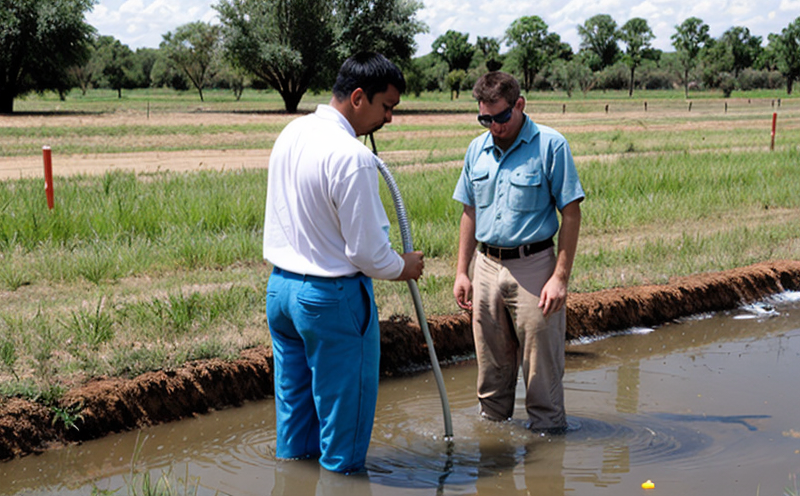ASTM D6975 Biofilm Formation Potential Test in Aquifers
The ASTM D6975 biofilm formation potential test is a critical method for assessing the risk of biofilm development within aquifers. This procedure evaluates how readily microorganisms can colonize and form biofilms, which can impact water quality and treatment processes. Biofilms are complex communities of microorganisms that attach to surfaces and form protective layers. In the context of groundwater and aquifer monitoring, understanding biofilm formation is essential for maintaining clean and safe drinking water resources.
The test involves exposing a synthetic membrane disk (SM) to the aquifer environment under controlled conditions. The SM serves as an ideal substrate for microbial colonization, allowing researchers to monitor the rate and extent of biofilm development. This process helps identify potential hotspots where biofilm growth might compromise water quality.
The first step in conducting this test is selecting a suitable location within the aquifer system that reflects typical conditions. The chosen site should be representative of the target area, ensuring accurate results. Once selected, the SM is placed at the designated depth for an extended period, often ranging from several days to weeks, depending on environmental factors like temperature and nutrient availability.
During this time, microorganisms naturally present in the aquifer colonize the membrane surface, forming a biofilm. Monitoring parameters such as pH, dissolved oxygen levels, and chemical composition provide insights into the types of organisms involved and their activity rates. By analyzing these data points, scientists can predict future biofilm development trends.
The results from this test are invaluable for several reasons. They help utilities design effective mitigation strategies against biofilm formation, ensuring long-term reliability of water supplies. Additionally, regulatory bodies rely on such findings to enforce standards that protect public health and the environment.
For researchers interested in exploring new technologies or improving existing ones, this test offers a robust framework for evaluating performance under real-world conditions. It also supports academic studies aimed at enhancing our understanding of microbial ecology within subsurface environments.
Benefits
- Predictive Capability: Provides insights into future biofilm development trends, enabling proactive management measures.
- Regulatory Compliance: Ensures adherence to international standards and local regulations regarding water quality.
- Enhanced Reliability: Helps maintain consistent water supply quality by identifying potential threats early on.
- Innovation Support: Facilitates research into novel approaches for preventing biofilm formation in aquifers.
International Acceptance and Recognition
- The ASTM D6975 test is widely adopted by various organizations including the World Health Organization (WHO), European Union directives, and national governments.
- It has been incorporated into numerous ISO standards related to water management and environmental protection.
Environmental and Sustainability Contributions
The ASTM D6975 biofilm formation potential test plays a crucial role in enhancing the sustainability of groundwater resources. By detecting early signs of biofilm development, it allows for timely interventions that prevent degradation of water quality. This proactive approach contributes significantly to sustainable practices by ensuring that natural aquifer systems remain healthy and functional over time.
Moreover, this testing methodology supports efforts towards reducing environmental impact associated with wastewater discharge into groundwater sources. Through precise monitoring, facilities can minimize harmful pollutants from reaching sensitive ecosystems downstream.





